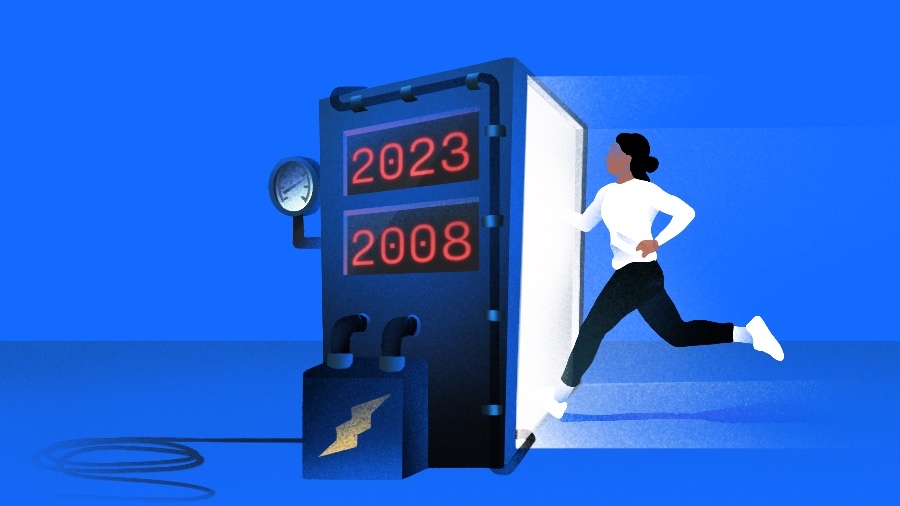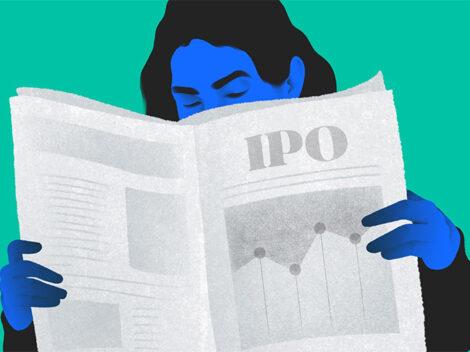Chat with any venture capitalist about the current down market and their talking point is always the same — great companies get funded during downturns.
But is that really true?
It does seem odd that when the economy slows and VCs pull back on their checkbooks, they all of the sudden are able to sort the wheat from the chaff. However, the theory is that during tough times, great companies will rise to the top and investors will do more due diligence and leg work to find them.
Search less. Close more.
Grow your revenue with all-in-one prospecting solutions powered by the leader in private-company data.
That sounds good and makes a certain amount of sense, but does it actually play out? Did great companies get the biggest fundings when the market tanked during the global crisis of 2008-09? Or did VCs actually back their fair share of washouts just like any other time?
Running a quick search of Crunchabse’s data for the largest rounds raised by U.S.-based startups between mid-2007 and mid-2009 gives us a glimpse at all the “great” startups that got funded during the previous downturn.
The top 10 rounds from the last downturn
Here is a quick rundown of the 10 biggest rounds from that era:
The two biggest rounds in that 24-month period were two $300 million Series Ds — one to gaming studio ZeniMax and the other to solar power startup Nanosolar.
Those two companies’ stories turned out about as differently as one can imagine.
Media company ZeniMax is best known as the publisher of the Fallout gaming series and many others games — and for winning a lawsuit against Oculus for copyright and trademark violations. Less than three years ago, Microsoft announced it would acquire ZeniMax and all its subsidiaries for $7.5 billion.
Nanosolar’s story turned out very different — as did the tales of most solar companies from that time (which we’ll get further into). The San Jose, California-based startup developed a low-cost printable solar cell manufacturing process. But, after the financial crisis, prices for solar panels made of crystalline silicon plummeted. By 2013, Nanosolar’s competitive advantage evaporated and it had laid off most of its workforce and was soon gone.
Austin, Texas-based HomeAway comes up next with the third-largest round during that time — a $250 million Series D. The startup was a pioneer in the vacation rental marketplace. It actually went public just after the downturn, and was later bought for $3.9 billion in cash and stock by Expedia. HomeAway also made several acquisitions, with its best known likely Vrbo.
Coming in fourth is none other than Facebook, as Meta was called then. The then-social media-focused company raised a $240 million Series C. It also took in the eighth-largest round during that period — a $200 million Series D. The company went public in 2012 and is still one of the most valuable tech companies in the world.
Fifth and sixth on the list are companies still with us today. Financial services and data company Amherst Holdings raised $225 million, as did communications infrastructure provider Zayo Group. Zayo actually went public in 2014 and was bought five years later by EQT Partners and Digital Colony Partners for $8.2 billion in cash.
The seventh-largest round was raised by yet another solar power company and one that is synonymous with the era — but not for the best of reasons. Solyndra raised a $220 million Series E during the downturn. The startup was hailed as a champion of sustainable energy and made copper indium gallium selenide solar cells. However, after the company received a $535 million U.S. Department of Energy loan guarantee under the American Recovery and Reinvestment Act of 2009, the government discovered major issues in both the company’s business practices and claims it made about its cells. About two years later the company filed for bankruptcy.
The startup that raised the ninth-largest round did not fare much better. Better Place, a battery charging and switching service for electric cars, raised a $200 million Series A. While based in Palo Alto, California, the company actually opened its first charging station in Israel in 2008. However, the world was not quite ready for charging stations and electric cars. The company ran into financial struggles trying to grow its market, and with expensive charging and swapping infrastructure. It would be bankrupt by 2013.
And lastly, No. 10 was Iowa-based Renewable Energy Group. The company raised a Series C worth about $125 million in 2008. About four years later, the company went public and proved there was a market for sustainable energy after all. Just last year, energy titan Chevron bought Renewable for about $3 billion.
Looking ahead
Looking at the top rounds for U.S.-based startups does show some titanic successes, but also some colossal failures that were bankrupt just a few years after taking in their big rounds.
However, a .700 batting average is amazing in baseball, so perhaps in a market slowdown venture capitalists and others really are able to find the right companies to pick. At least for the most part. If we do enter another massive downturn, investors will undoubtedly also find the next Solyndra.
Illustration: Dom Guzman

Stay up to date with recent funding rounds, acquisitions, and more with the Crunchbase Daily.











![Illustration of pandemic pet pampering. [Dom Guzman]](https://news.crunchbase.com/wp-content/uploads/2021/03/Pets-2-300x168.jpg)
67.1K Followers